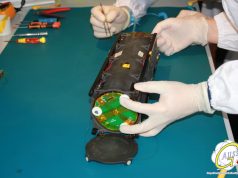In the changing landscape of manufacturing, towards sustainability 3D printing is seen as a partner. This shift depends not on progress but also on the materials that drive these advancements. In this transformation eco-friendly filaments present a route to lessen the impact of 3D printing embodying the values of sustainable manufacturing.
Traditionally the world of 3D printing has favoured materials like PLA, ABS and PETG for their reliability and performance. However concerns about the effects of non-biodegradable plastics have sparked discussions on the sustainability of these methods. The search for materials that align with nature while maintaining quality has become more urgent than before.
Biodegradable Filaments – What Are They?
Biodegradable filaments step in as a solution for those who prioritize responsibility. These materials, such as PLA and PHA are derived from sources. Can decompose into harmless substances under specific environmental conditions. This unique feature significantly reduces the impact associated with disposing of printed items in line with sustainable manufacturing principles.
Advantages and Challenges
Opting for filaments brings environmental advantages, including lessening persistent plastic waste and lowering the carbon footprint linked to their production. Nevertheless this transition is not, without challenges.
Challenges arise in the use of filaments due, to factors like their cost, availability and unique performance features. Finding a balance between sustainability and meeting the needs of 3D printing applications stands as an endeavour, for the industry.
Fostering Sustainable 3D Printing Practices
In the spirit of sustainability, the 3D printing community is increasingly turning towards biodegradable filaments as a viable solution to environmental challenges. This shift reflects a broader commitment to eco-friendly practices and materials, underscoring the role of innovation in driving sustainable change. For enthusiasts and professionals alike, exploring sustainable 3D printing materials represents a tangible step towards reducing the ecological impact of their creations.
Conclusion
The path towards sustainable manufacturing is both a challenge and an opportunity, inviting the 3D printing community to rethink the materials at the heart of this revolutionary technology. Biodegradable filaments stand at the forefront of this transition, offering a harmonious blend of environmental responsibility and technological advancement. As we embrace these materials, we not only contribute to a more sustainable world but also unlock new possibilities in the realm of 3D printing.
Subscribe to our Newsletter
3DPresso is a weekly newsletter that links to the most exciting global stories from the 3D printing and additive manufacturing industry.






















